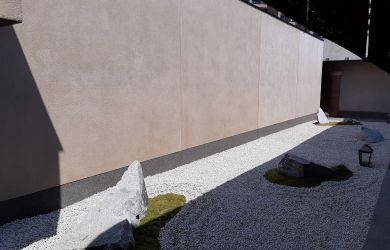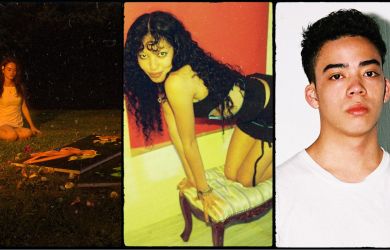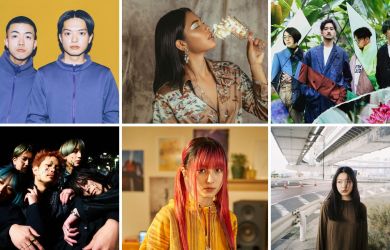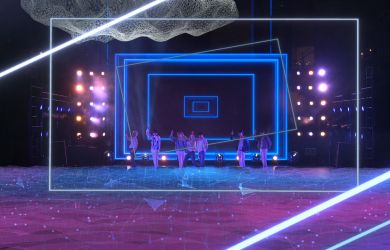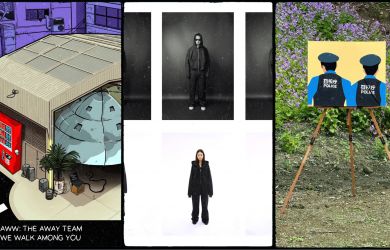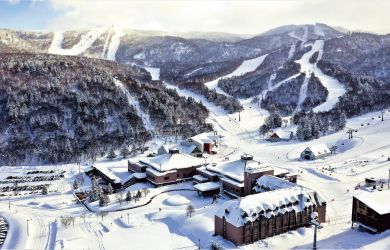
June 24, 2010
Picture This
After scaling the heights of the New York fashion world, photographer David Stetson rediscovers his muse in Tokyo.
By Metropolis

Maiko, 2010, taken for the NHK documentary Forbidden Kyoto, to be televised on July 4 in Japan and to 160 countries worldwide

Photo from the project “Underground,” an ongoing archive of “Tokyo Youth Culture” planned for exhibition in Europe next year

Photo from the project “Underground,” an ongoing archive of “Tokyo Youth Culture” planned for exhibition in Europe next year

Sophia Loren, Paris, 1975. This “fashion exclusive“ for Christian Dior was the first that Loren had given in ten years.

Hiroko Koshino 2010 collection, Japan Fashion Week

Oliver & Tomoko Mauss, family portrait at Stetson’s Yoyogi studio, 2009
And then, a bolt from the blue: a stock photography agent in Japan had a client who had used Stetson’s photos and wanted to commission a shoot. The agent wanted to know if the photographer would come to Japan.
“You won’t believe what the first few [assignments] were,” he recalls of his early work here. The famed fashion photographer was brought all the way across the Pacific to take pictures not of Bubble-era craziness, Omotesando fashionistas, or the burgeoning Shibuya-kei scene, but… for jigsaw puzzles.
“There was a period when jigsaw puzzles were a major fad in Japan,” he recalls. “A lot of my stock pictures that had been purchased while I was in New York were for jigsaw puzzle use, and I didn’t know it at the time, but I actually had 36 puzzles on the market—with my name on them. And the funny thing was, they introduced them as the ‘David Stetson series of jigsaw puzzles,’ but then they’d take sections of my bio as slogans. Because they love slogans, but the slogan doesn’t actually have to mean anything: they just like words in English. So they’d take a random piece out of my profile and just drop it in.”
As silly as it sounds, the jigsaw puzzles and other Japan-based assignments brought the spark back to his work.
“Coming to Japan rekindled my love of photography. I found myself surrounded by inspiration, by images, by things that were so unfamiliar to me it made me want to photograph them. And when I saw the pictures, I liked the pictures, which encouraged me to take more. Suddenly, I was a good photographer again! It sounds sort of conceited and arrogant to say that, but I was excited. I found that I was inspired by Japan, by the surroundings… And it persisted.”
Stetson officially relocated to Tokyo in 1992 and has been here ever since. Along with the new surroundings, the photographer has adopted a fresh approach. Although he continues to do some fashion work, he refuses to be constrained by that label any longer.
Beginning with the puzzle projects, Stetson has increased his range in visual media. He’s directed music videos for the likes of perennial Japanese favorites L’Arc en Ciel. He’s worked as the art director for the now-defunct lifestyle publication Wine Magazine. He’s shot book covers, directed documentaries, and started his own creative services company, Mode Innovations, to assist businesses in branding and product promotion. He even made an award-winning calendar for Volkswagen. In short, he’s pursued any opportunity that came his way—and a few more that he created for himself.
Of course, Stetson still does non-commercial photography, and the walls of his studio are hung with a surprising variety of images. One series that stands out was taken during a sumo training session, featuring an alternately fierce and smiling Kotooshu alongside other renowned wrestlers. Simple black-and-white photos of Japanese items like geta and shisa have a rustic charm. And his most recent series of eye-popping color photos of Harajuku youth culture are undeniably fascinating.
As we discuss his various lines of work, however, he lets on that he enjoys portraiture the most. In fact, that’s the reason Stetson, who remains committed to shooting on film, opened his new studio.
“I like shooting portraits because the two things that digital photography can’t take away is how to light and how to direct, and those two things are of primary importance when you’re photographing portraits,” he says. “People come to me and say, ‘I don’t photograph well’ or ‘I’m not photogenic.’ That’s a challenge. That’s music to my ears, because I refuse to believe that every single person, without exception, doesn’t have a great picture in them. It’s not about the photogenic quality, it’s about character, it’s about bringing out a person’s character. So I love doing portraits of nonprofessional people and watching their face when they see the picture.”
Although shooting average folks might seem like a letdown after working with top models and celebrities, Stetson insists he doesn’t miss the glamorous life of a big-time fashion photographer. “I’ve been there. I’ve done that. And I’ve got the photos to prove it!”
So it would appear that plain folks like you and me are more inspiring than the average supermodel. Take that, Kate Moss.
Impressions of Japan
David Stetson’s photographs will be featured in the exhibition “Impressions of Japan” in the main lobby (2F) and on the mezzanine “gallery” area (3F) of the ANA Intercontinental Tokyo, from June 30. 1-12-33 Akasaka, Minato-ku. Tel: 03-3505-1111. Nearest stn: Tameike-Sanno (exit 13). www.anaintercontinental-tokyo.jp
Stetson Studio/Gallery specializes in private portraits, commercial assignments and art photography. 1-45-13 Tomigaya, Shibuya-ku. Tel: 03-6416-82631 (English) or 03-6416-8262 (Japanese).
Stetson’s work is also available on T-shirts for sale at GGD (http://meturl.com/ggd) and Grand Global (http://meturl.com/gg) shops in Tokyo.
See Stetson’s website at www.davidstetson.com.
